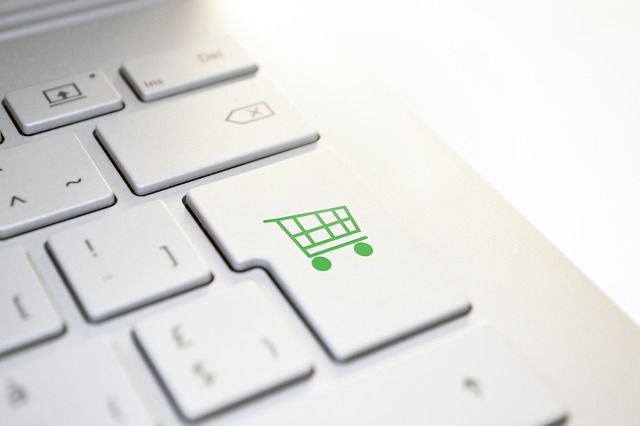Understanding Product Bundling
In the bustling world of e-commerce, product bundling emerges as a powerful strategy that can significantly enhance sales. But what exactly is product bundling? In simple terms, product bundling involves selling multiple products together at a combined price, typically offering a discount compared to purchasing each item individually. This concept is not merely about packaging items together; it’s about creating perceived value for consumers. When shoppers feel they are getting more for less, they are more likely to add these bundles to their carts—a behavior that online retailers can leverage to foster e-commerce sales.
Product bundling not only facilitates the sale of lower-demand products alongside popular ones but also encourages customers to explore products they might not normally buy. Customers have different psychological triggers when purchasing, and bundling cleverly taps into that. For instance, by presenting a popular item alongside a complementary product, you entice customers into a package deal that heightens their shopping experience. This technique ensures consumers view their purchases as a smart and efficient decision, which can be a game-changer for e-commerce businesses striving for growth.
The Benefits of Product Bundling
Let’s explore the multifaceted advantages of product bundling. First, bundling increases the average order value (AOV). When customers bundle items, they tend to spend more overall. For instance, if a customer is interested in a laptop, offering a laptop bag and a mouse at a bundled price encourages them to invest a bit more upfront, boosting your sales effectively. This strategy not only amplifies immediate revenue but also enhances inventory turnover rates, allowing retailers to manage stock levels optimally.
Moreover, bundling enhances the shopping experience. Shoppers often appreciate the convenience of purchasing multiple items in one transaction. By grabbing everything they need in one go, customers save time, reducing friction in the buying process. When customers enjoy their shopping experience, they’re more likely to return to your online store, fostering loyalty—a key principle in online business growth. In today’s competitive e-commerce landscape, providing a seamless shopping experience can differentiate your brand from countless others.
Types of Product Bundling
Several types of product bundling exist, each with unique benefits tailored to different customer needs and business models. Let’s dive deeper into the most notable types. First, there’s pure bundling, where a retailer sells a package that cannot be purchased separately. Think of subscription services—many offer complete packages, which include various features only available if a user subscribes to the whole bundle. This method can drive sustained customer engagement as it prompts reliance on a broader service ecosystem.
Another common method is mixed bundling, where customers can buy items together at a discount or individually at regular prices. Offering this flexibility allows customers to choose an option that best suits their preferences, thereby improving their satisfaction. Consider fast-food restaurants as an example. They typically allow you to order meals combined with drinks and sides at a discounted price or just order individually. This method not only helps to sell more but also lets customers who are inclined to pay full price still enjoy their meal on their terms.
Implementing Product Bundling in E-Commerce
When you implement product bundling in your e-commerce strategy, you should design bundles that resonate with customer needs and behaviors. Create bundles based on common buying patterns. For example, an e-commerce website selling outdoor gear might combine a tent, sleeping bag, and flashlight. This kind of suggestive selling aligns with consumer expectations and encourages them to complete their outdoor readiness in one purchase. Analyzing customer purchase history can also lead to discovering potential bundles that appeal to existing customers.
To optimize effectiveness, clearly communicate the benefits of the bundle. Use visuals to show the savings customers get when they purchase a bundle. Additionally, leveraging email marketing can be an effective tool for promoting exclusive bundle deals to loyal customers. Providing occasional discounts or limited-time offers on bundles keeps customers engaged and encourages them to make a purchase sooner rather than later. Timed promotions can create a sense of urgency, nudging consumers toward taking immediate action.
The Psychological Impact of Bundling
Product bundling intricately ties into consumer psychology, which plays a vital role in shaping buying decisions. Human beings are naturally inclined toward getting “more bang for their buck.” When consumers perceive that they’re receiving extra value through a bundled offer, their willingness to purchase increases dramatically. This behavior arises from the principle of reciprocity; when individuals feel they are getting a deal, they tend to respond positively by making a purchase. E-commerce businesses can harness this principle by carefully pricing bundles and highlighting the savings they present.
The “anchoring” phenomenon is another critical psychological factor in play here. By presenting a higher-priced single item alongside a cheaper bundled package, retailers create a favorable comparison that may lead consumers to perceive the bundle as a smarter choice. This influences not only their perception of value but also their overall purchase behavior. More than the monetary savings, consumers appreciate the thought process that goes into the bundle, often leading to increased sales for online retailers.
Challenges of Product Bundling
Despite its various benefits, product bundling is not without challenges. One major concern is ensuring the right mix of products within each bundle. Offering complementary items increases the likelihood of a sale, but mismatched items can lead to consumer frustration and poor sales performance. Retailers must engage in thorough market research to understand what products naturally align with each other. This research can help refine the bundling process and create packages that resonate with consumers and lead to successful sales outcomes.
Another challenge businesses encounter involves pricing strategies. Striking the perfect balance between perceived value and profitability can often prove challenging. While discounts can lure customers in, they may also diminish overall profit margins. Therefore, it’s crucial to analyze costs diligently and adjust prices accordingly to ensure profitability without sacrificing consumer appeal. Creating bundles that appeal to different segments, such as budget-conscious consumers or those seeking premium offerings, can help mitigate this challenge and ensure wide-ranging sales success.
Measuring Success: KPIs for Bundling Strategies
To evaluate the success of product bundling strategies, e-commerce businesses should track key performance indicators (KPIs) that matter. Start by analyzing the increase in average order value (AOV) and the conversion rate of bundled products versus standard products. These metrics are critical in determining the effectiveness of your bundling strategy. Another useful KPI is the sales mix of bundled versus standalone products, which indicates how well your bundles resonate with customers compared to individual product sales. Additionally, monitoring customer feedback and engagement relates directly to customer satisfaction and long-term loyalty, which are essential in the competitive e-commerce environment.
Moreover, utilizing A/B testing can provide powerful insights into various bundle configurations, pricing strategies, and even promotional campaigns. By presenting different bundle variations to specific customer segments, e-commerce businesses can identify what resonates the most. This granular approach allows businesses to adapt dynamically, ensuring they continually meet customer needs and preferences in a manner that drives sales growth.
Frequently Asked Questions (FAQ)
1. What is product bundling and how does it work?
Product bundling involves selling multiple products together as a single package, typically at a lower price than if the items were purchased separately. This strategy enhances perceived value and encourages customers to buy more, effectively increasing overall sales.
2. How can product bundling boost e-commerce sales?
By bundling products, retailers can increase the average order value, enhance the shopping experience, and reduce inventory. Customers appreciate the convenience of purchasing complementary items together, encouraging them to spend more.
3. What are the types of product bundling?
The main types are pure bundling, which requires purchasing items together, and mixed bundling, where items can be bought together at a discount or individually at regular prices. Each type has its own advantages based on the business model.
4. What challenges might I face when using product bundling?
Challenges include selecting the right combination of products and pricing strategies. Poorly selected bundles can frustrate consumers, while offering too steep discounts can hurt profitability. Market research and analysis are essential to overcome these issues.
5. How do I measure the success of product bundling strategies?
Key performance indicators (KPIs) to track include average order value, conversion rates for bundled versus standalone products, and customer feedback. Additionally, A/B testing different bundling configurations can reveal effective strategies.



